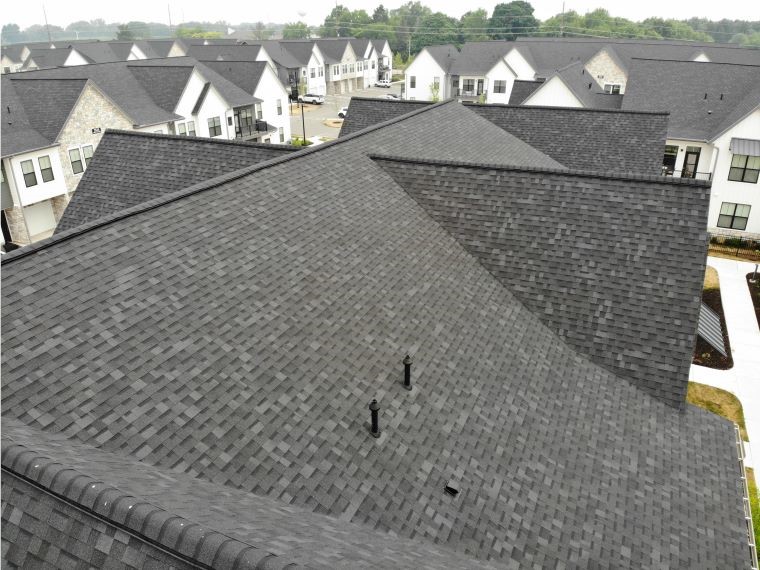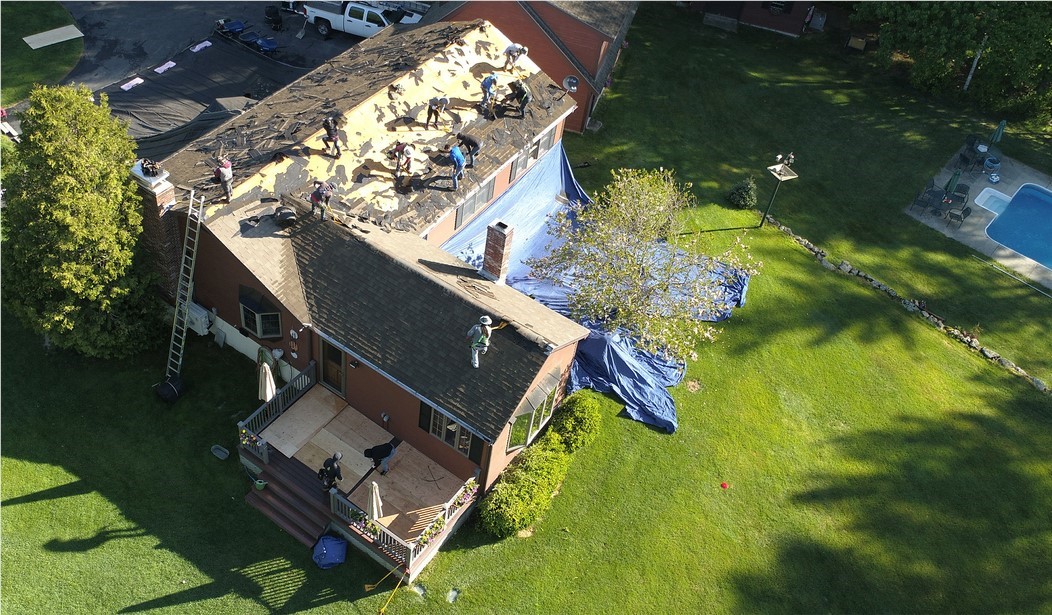If you notice puddles of water on your flat roof, you might wonder if it’s normal or cause for concern. Since it usually only happens after big rains, and the water will eventually evaporate, most people don’t consider it an emergency and will let it go until the next time.
While it’s true ponding water (defined by the industry as water that stands for 48 consecutive hours following rain) may not be an imminent emergency, it is certainly cause for concern over time. If you ignore the issue, your roof could sag, develop more leaks, or generally weaken.
Beyond causing deterioration, standing water draws mosquitos and other pests and also makes it easy for algae and moss to grow—none of which is desirable on your roof.
Why is Water Ponding on the Roof?
Although we call them flat roofs, they actually do have a slight slope to them (enough to encourage drainage). So, if you notice ponding water, there could be a couple reasons:
- Poor installation. This could mean the flashing wasn’t done right, there’s too much material near the roof’s edge, or even that the pitch wasn’t installed correctly. Have your roof inspected by an expert to determine the exact cause and solution.
- Drainage issues. Check your gutters, downspouts, drain system, or scuppers for debris. If your drain system is blocked, it prevents water from escaping, and the only place it has left to be is in a pond on the roof. Many times, clearing a blockage from your drain system is the only thing that needs to be done to eliminate ponding water.
- Saturated insulation. If the insulation beneath the flat roof gets flattened or soaked, it can lose its shape and even dissolve. When this happens, it creates a depression in the roof, which then collects standing water.
When is Ponding Water a Concern?
If the water doesn’t drain within two days, you need to address the problem. By that time, any water from the storm should have evaporated, so if it hasn’t, you know there’s an issue.
First, check for anything you can plainly see. Search for blockages in your drain system and clear it out if you can. Make sure there aren’t any pipes or other obstructions preventing water from draining.
If you don’t see anything obvious, we recommend you contact an expert to check the installation, the slope, and possibly the insulation.
How to Prevent Ponding Water
The easiest way to prevent ponding water is by being proactive. A preventive maintenance program will ensure your flat roof is healthy and draining properly, or that signs of trouble can be treated right away before anything turns disastrous.
You should definitely give your roof a look after a heavy rain to see if there are any signs of ponding. There are solutions to all the causes we’ve discussed here, and taking care of things early will save you time and money over the long-term.
If you're located in West Michigan, let us know if we can help with preventing ponding water on your commercial roof!Subscribe to West Michigan Roofing's Blog





Comments